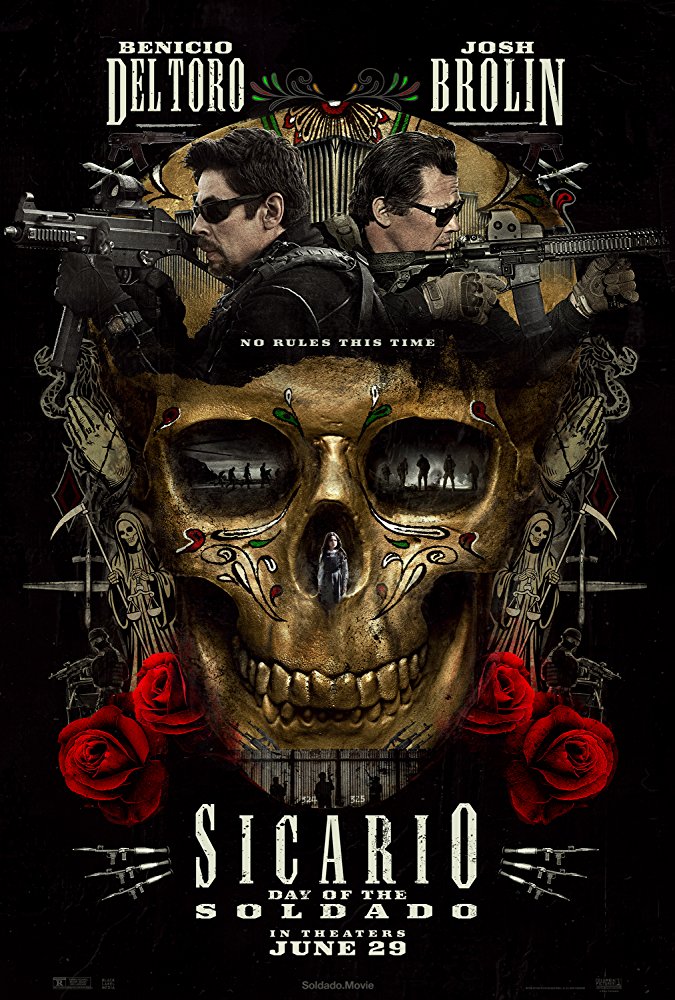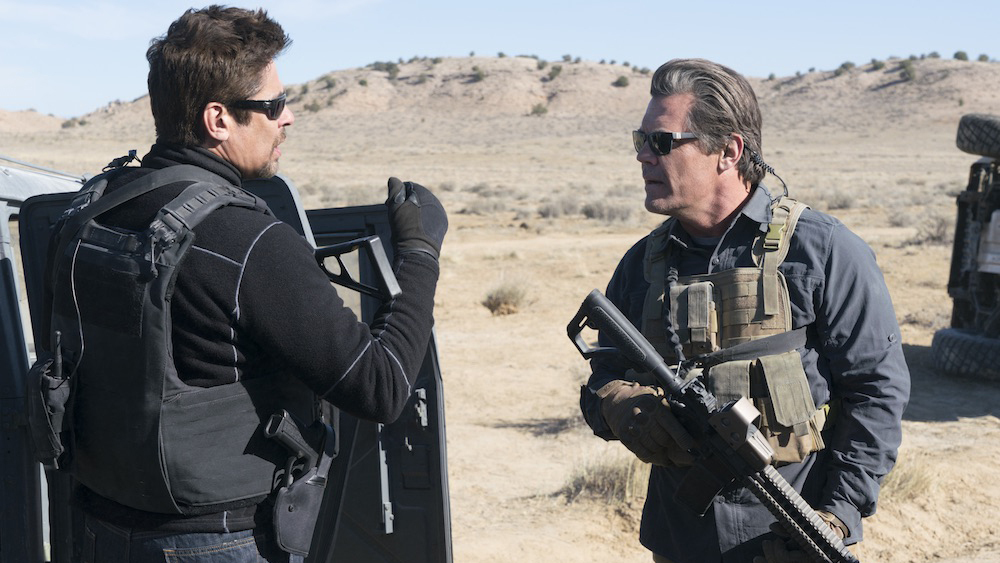LESSON #1: SUPPORT PHYSICAL MEDIA AND FILM PRESERVATION— The Friday announcement that the Filmstruck streaming service will close at the end of November is a blow to classic, international, and documentary films. The vast Criterion Collection was previously occupying a shingle of Hulu Plus before Filmstruck can do be, and I’m sure that winning content will find a new home, likely something from its Warner Bros. parent looking to compete with Disney and Netflix. Still, this is the equivalent of a museum loosing its walls boarding up its treasures. Let this be a reminder call to support physical media, even if those Criterion discs are pricey. I get that streaming is portable and convenient, but a top-shelf disc is worth every penny sometimes. If discerning cinephiles should also look to local libraries for access to hard-to-find films. I’ll echo fellow FF contributor Jacob Neff to promote the absolutely free Kanopy app that is connected to most library cards. You can’t pass up free and make sure to follow Jacob’s “You Should Be Watching” column for recommended buried treasures. If you need a checklist bigger than that, borrow Martin Scorsese’s.
LESSON #2: FILMS MAY AGE, BUT THE MEMORIES AND IMPACT THEY CREATE WILL NOT— RogerEbert.com and New York magazine film critic extraordinaire Matt Zoller Seitz had a recent interview with The Last Picture Show filmmaker Peter Bogdanovich and the topic of superhero movies came up. The respected armchair historian asserted that superhero movies (with few exceptions) are going to “date very badly.” I think the guy enjoying the way-back machine can’t drive the way-forward machine with the same level of understanding. It is almost a certainty, like every genre hey-day that has come before now, that comic book films cannot maintain their current market saturation level forever, but not before adding to the game-changing level of impact and entertainment that they have earned and enjoyed. We’re going on 40 years since Superman: The Movie and nearly 20 years since their early-00s renaissance. In that time, superhero movies have the fan following numbers that have already created multi-generational reach. That’s bigger than a phase or a fad. They have become too big to fade into forgotten nothingness. Like western or noir, they will simply evolve with their times because even with tastes changing, we’re still making westerns and noirs too.
LESSON #3: THE FILM MEDIUM’S MIDDLE CLASS CONTINUES TO FADE— Speaking of blockbusters, tentpole films never used to be so big. There was a time that a $100 million budget was seen as an excessive risk that could sink a studio. Now, we’re talking about $200+ million films being too big to fail or overinflated comedies (like Adam Sandler flicks from a decade ago) that cost $80 million to make when they used to cost a tenth of that. Many of the popular hits of the 1980s and 1990s that came before the gigantic budget price tags of today were these middle-budgeted studio programmers that cost between $25-$75 million. They represented an entire economy of smart money staple. They always had one or two big stars attached that ensured a loyal and steady audience across most any genre, from cop thrillers to romantic comedies. Today, especially after the announced shuttering of Annapurna Pictures (excellent editorial piece from Next Best Picture), the “middle class” film nearly doesn’t exist. Things are either huge or relegated or dismissed to indie fare. For some parallel examples, Die Hard had a $28 million budget and Pretty Woman‘s was $14 million. Today, one would be a Dwayne Johnson film with quadruple the sticker price and the other would be a low-level indie like The Big Sick with a scant budget of $5 million that has to beg for funding and distribution. Like our own national economy, if you want a healthier marketplace and industry, boost the middle class. Bring back the middle-budgeted programmers.
LESSON #4: TAYLOR SHERIDAN HAS EARNED THE CRED TO MAKE ANYTHING HE WANTS— Taylor Sheridan is one hell of a writer and emerging as a one hell of a filmmaker too. He had me at Sicario‘s script. If he didn’t impress you by the Oscar-nominated Hell or High Water, you’re dead to me. Wind River spread his wings to director’s chair and now he’s preparing his follow-up under the Warner Bros. big top. His thriller Fast, with franchise potential, is coming and it’s attracting the attention of Chris Pratt. Make it happen, WB. Make it happen.
LESSON #5: NO ONE IS GOING TO MISS A BOBA FETT MOVIE— LucasFilm producer Kathleen Kennedy declared Friday that James Mangold’s Boba Fett was dead in favor of Jon Favreau’s The Mandalorian TV series that will help open Disney’s exclusive streaming service. I’ll be the guy that says it. I never understood the fascination with the admittedly good-looking character after about four lines and faint presence in the original trilogy. Fan fiction has made Boba Fett into a cult figure, but Solo shows that even legends can’t guaranteed a successful or profitable film. The bounty hunter didn’t stand a chance on the biggest stage and James Mangold dodged a bullet.
LESSON #6: TALK TO YOUR KIDS ABOUT THE FILMS THEY WATCH— Notable semi-“granola” parent and actress Kristen Bell shared in an interview with Parent magazine that she’s not fully comfortable with some Disney animated classics. She called out Snow White and the Seven Dwarves as one poor example, citing the failing to avoid taking food from strangers and, more astutely, the notion of consent when it comes to princes and their kisses to sleeping maidens. Shrug all you want and dismiss Snow White and others as a harmless kids movies, but Bell is handling it right. Bell shared in the interview how she makes sure to have discussions with her children after the movies they watch. This school teacher over here writing this column highly approves of that parenting measure. Engaging in those talks elevates the experience from being time-killing entertainment into rich “teachable moments,” and they help correct misconceptions we might not even know kids had or picked up along the way. The children will see your interpersonal example of the beginnings of critical thinking. Make movies shared episodes of such enrichment and quality time.
 DON SHANAHAN is a Chicago-based and Rotten Tomatoes-approved film critic writing on his website Every Movie Has a Lesson and also on Medium.com for the MovieTime Guru publication. As an educator by day, Don writes his movie reviews with life lessons in mind, from the serious to the farcical. He is a proud director and one of the founders of the Chicago Independent Film Critics Circle and a new member of the nationally-recognized Online Film Critics Society. As a contributor here on Feelin’ Film now for over a year, he’s going to expand those lessons to current movie news and trends while chipping in with guest spots and co-hosting duties, including the special “Connecting with Classics” podcast program. Find “Every Movie Has a Lesson” on Facebook, Twitter, and Medium to follow his work.
DON SHANAHAN is a Chicago-based and Rotten Tomatoes-approved film critic writing on his website Every Movie Has a Lesson and also on Medium.com for the MovieTime Guru publication. As an educator by day, Don writes his movie reviews with life lessons in mind, from the serious to the farcical. He is a proud director and one of the founders of the Chicago Independent Film Critics Circle and a new member of the nationally-recognized Online Film Critics Society. As a contributor here on Feelin’ Film now for over a year, he’s going to expand those lessons to current movie news and trends while chipping in with guest spots and co-hosting duties, including the special “Connecting with Classics” podcast program. Find “Every Movie Has a Lesson” on Facebook, Twitter, and Medium to follow his work.




